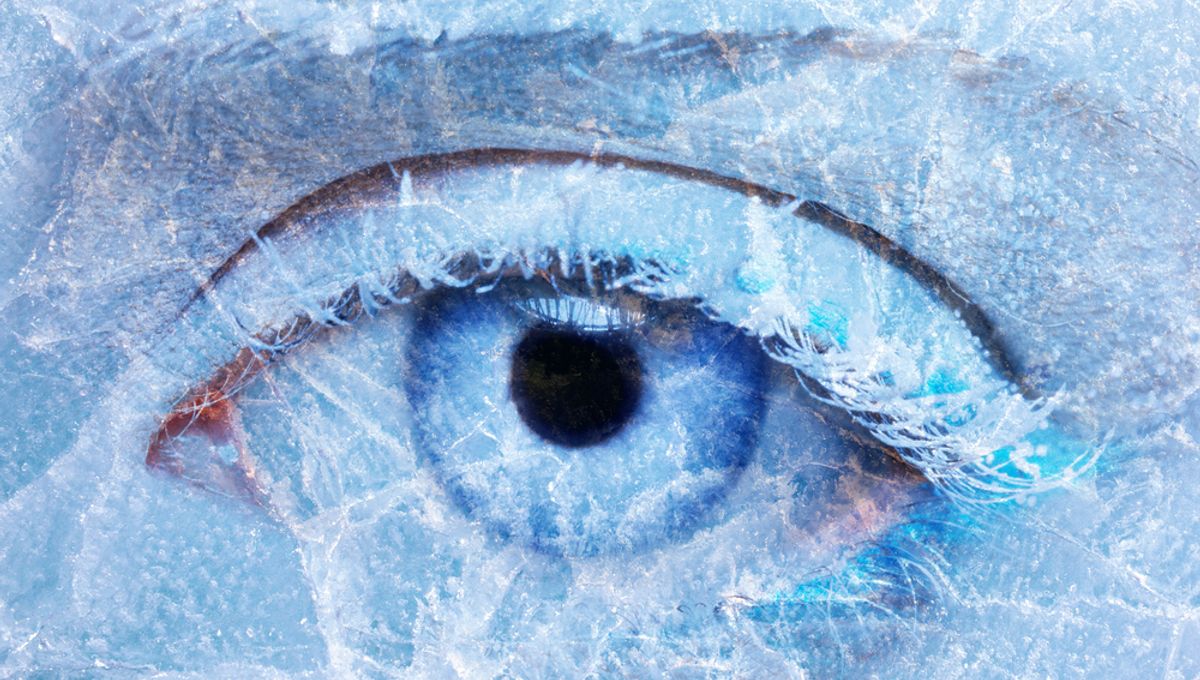
On December 20, 1980, Jean Hilliard was driving to her home in Lengby, Minnesota, when she slid off the icy road and into a ditch.
Believing herself to be just a few miles away from a friend’s house, she set off on foot to look for help, in the middle of a cold Minnesotan night. Her estimate of how far she was away from Wally Nelson’s place was wrong.
“I’d get over one hill, thinking his place would be there, and it wasn’t,” she told MPR News. “I was more frustrated than scared.”
Finally, she saw the place and headed for the door. Just a few feet before safety, everything went black, and she collapsed to the ground. The following day, Nelson woke up next to a woman he’d brought home the previous night and noticed his friend lying in the snow on his lawn, with her eyes frozen wide open.
“I was so damn surprised when I saw that little hunk out in the yard,” Wally described the scene to MPR. “I grabbed her by the collar and skidded her into the porch. I thought she was dead. Froze stiffer than a board, but I saw a few bubbles coming out of her nose.”
Her body was frozen so solid that Nelson had trouble getting her into his car, and had to load her into the back diagonally before he could take her to the hospital. There, the signs did not look good. For instance, and we don’t want to get too technical here, but it’s never a good indication of health when you are unable to insert a needle into a patient because the patient is “frozen too solid to penetrate the skin“, as Hilliard was.
Her pulse, when they were finally able to measure it through her frozen skin, was down to 12 beats per minute, her frozen eyes did not respond to light, and her skin had gone gray.
”The body was cold, completely solid, just like a piece of meat out of a deep freeze,” Dr. George Sather, who treated her, told the New York Times shortly after the incident. The team decided to treat her using warming pads, though they were not optimistic about the results, given her body temperature was too low to register on the hospital’s thermometers.
“I thought she was dead,” Sather told the Montreal Gazette. “[B]ut then we picked up an extremely faint whimper. We knew there was a person existing then.”
Remarkably, as she thawed out her vital signs improved. She woke later that day, and immediately began to worry about her dad finding out that she had ruined his car. Not bad for someone who a few hours prior had been a Calippo.
The team believed amputation of her legs might be necessary, but as time went on even that wasn’t needed. She left the hospital with frostbitten toes, which is quite something for someone whose feet had been frozen into the shape of her boots.
Though this is a remarkable recovery, it is not the “miracle” or unsolved mystery that it has been portrayed as on, uh, the show Unsolved Mysteries.
“There’s a term we have that says no one is dead until he’s warm and dead,” associate director of the Boston Emergency Medical Center Dr Richard Iseke told the Herald-Journal, explaining that he had encountered other patients who had made similar recoveries.
“We have patients you can knock on like wood,” University of Minnesota professor of emergency medicine David Plummer added to MPR. “They feel rock solid frozen. That in no way dissuades us from the resuscitation attempt. And we do have a track record of success with that.”
It’s probable that she was not frozen as solid as reports from her friend and doctors initially suggested. When cells are literally frozen they become damaged, and are often destroyed entirely by a stage where they “crystalize like ice”, Dr K. Alvin Merendino explained to the Herald-Journal. “When you thaw them out they’re just a mass of nothing”.
It’s one of the reasons why we aren’t yet able to place people into suspended animation and revive them a few years later. Instead, he believes that the stiffness of her body was likely due to the resistance of her extremely cold muscles, while she survived as her brain warmed her blood at the expense of her extremities (as happens during cases of hypothermia).
As her body and circulation slowed down, she was able to survive on much less oxygen, getting enough despite her low breathing rate. Years on from the accident, Jean is perfectly healthy, though she tends to avoid icy roads at night.
This article first appeared in August 2021.
Source Link: The Woman Who Survived Being Frozen "Like A Piece Of Meat"